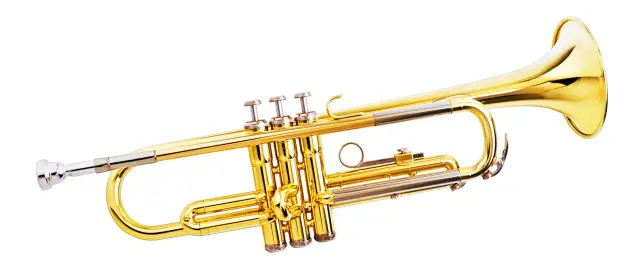If you are a brass band fan, you’ve probably noticed that the tuba is seldom engaged in spectacular solo sections. You may be wondering if the reason for this is because the tuba is hard to play.
Although the tuba is not the hardest brass instrument, the long and wide pipe work requires more lungs and lip power than smaller instruments. The most challenging aspect of tuba is playing the high ranges, although the lower register also has its difficulty as the note are harder to distinguish.
Many seasoned band tubists prefer to stay away from the high register. Solo tuba players do use these notes, which requires a lot of technique, practice, and lungs. Good professional tubists are generally able to play up to 6 octaves.
Table of Contents
Why the tuba is hard to play
These are the main challenges involved in playing the tuba, and the reasons it’s considered hard to play. The tuba player has to:
- Learn and apply music theory,
- Get used to the physical size of the tuba,
- Have the lung capacity needed,
- Master the embouchure on a large mouthpiece,
- Be able to control the intonation,
- Play the lowest and highest ranges with ease, and
- Adapt to different musical styles.
Learning and applying music theory to the tuba
As with any instrument, the tuba player has to learn basic music theory. As most of the tuba’s notes are written in the bass clef, the tubist must be able to read all the notes in this clef.
The tuba player must also have a well-developed sense for rhythm and be able to read the music score rhythmically correct.
The most difficult part is for the tubist to apply the theoretical knowledge. This encompasses the correct fingering for every note, and the lip and mouth movement in the mouthpiece, called embouchure, to produce the required note.
Basic harmony knowledge is also necessary to understand the role the tuba is playing in the ensemble.
Overcoming the physical size of the tuba
The instrument is heavy and unwieldy to manage. The tuba player should be able to comfortably hold a 25 to 30 lb instrument while playing – vs 5-7 lb for a trumpet.
The tuba player basically has to “fit into” the curves of the instrument and “wear” it. As the tuba is such a large instrument, it could be a problem if the tubist is physically very small. In some instances, this means using a smaller size tuba.
Acquiring the necessary lung capacity
The tuba has a lot of pipe-work. The tube is longer and wider than any other brass instrument. Consequently, it accommodates a lot of air which has to get moving and vibrating in the tube. This makes the tuba hard to play.
The tuba player’s lung capacity plays a very important role. The tubist has to be able to provide a good flow of air while controlling his breathing simultaneously.
Long, low notes are typical in the tuba score, and the player’s lung capacity must be enough to sustain these long and low notes.
Mastering the embouchure on a large mouthpiece

The tuba’s mouthpiece is the largest of all brass instruments. The tubist has to blow a lot of air through it to produce a sound. The player’s lips are kept a bit looser than with other brass instruments when playing without the tongue.
The player needs more air to make the lips flap than with any other instrument’s mouthpiece, making it more challenging.
The hardest part of the sound-producing process is that the player’s lips must become accustomed to the position for every note. Keeping the lips in shape also requires daily practice.
Controlling the intonation on the tuba
The tuba often plays notes with a very low pitch. These notes are difficult for the human ear to clearly distinguish, e.g. distinguishing between a Bb and a C.
Getting to the point to always play clear on-pitch notes can be hard for the tubist. A tuba player may even hyperventilate when practicing low notes, e.g. when playing a C0.
On the other hand, the pitch is low that so you have a bit more wiggle room to get it right.
Being able to play the low & high range
Since the lower notes the tuba produces are the most frequent notes written by composers, many tubists are not used to playing the higher ranges.
The embouchure is to a certain extent different when playing the higher registers. It is hard for the tuba player to practice all the registers regularly.
Many tubists who have played for many years are still reluctant to play anything high.
Adapting to varied musical styles
What makes it hard for a tuba player is that s/he may be expected to play different styles of music. Playing marching band music involves many oompahs and long notes that are relatively easy to play.
Likewise, playing in a polka or dixieland band doesn’t involve that much challenge. Practicing etudes, scales and solos for ensembles is a lot more challenging.
When the tuba is played in a symphony orchestra, faster passages and higher register notes are required, which demands greater mastery.
While some tuba players have the goal of playing high and fast passages, others are happy with laying down a bass line in tune and in tempo to support other musicians.
Is learning the tuba difficult?
The tuba has a relatively steep learning curve until you’ve mastered the basic techniques. The new tuba player first has to learn how to get the air in the long and wide tube vibrating.
It can take time to get used to the large mouthpiece and learn how to control breathing. Learning the fingering is generally the easiest part – once memorized, apply the correct fingering is quite straightforward.
In the beginning, the new tubist may only be able to play three or four notes, but as his/her lip muscles strengthen, s/he will be able to play a wider range of notes.
Children generally start learning the tuba when they’re 10 to 12 years old. At that age, the instrument tends to be quite challenging.
Is the tuba harder than the trumpet?

Let’s compare the challenges of the tuba vs the trumpet:
| Aspect | Tuba | Trumpet | Which is harder? |
| Size | large and heavy instrument, difficult to handle. | Smaller and lighter, easier to handle. | Tuba |
| Air volume | Large volume of air needed to produce sound. | Smaller volume of air needed to produce sound. | Tuba |
| Mouthpiece | Large mouthpiece with easier embouchure. | Small mouthpiece with a more complex embouchure. | Trumpet |
| First notes | Easy for a beginner to produce first notes. | Harder for a beginner to produce first notes. | Trumpet |
| Register | Takes time to be able to play all the notes in one octave. | Takes time to be able to play all the notes in one octave. | Tie |
| Intonation | Difficult to hear pitch correctly on low notes | Difficult to hear pitch correctly on high notes | Tie |
| Lip fatigue | Lips don’t tire so quickly | Lips tire sooner | Trumpet |
| Fast playing | Struggle to play fast notes | Easier to play fast passages | Tuba |
Regarding intonation, An A on a tuba may have a frequency of 110Hz vs 880Hz or even 1760Hz on a trumpet. As a result, you can be about 1/8 as accurate on a tuba compared to a trumpet for the same amount of “out-of-tuneness”.
Final words
Although the tuba is not the most difficult instrument to play, it is still challenging to learn and play. Most tubists love their instrument, however, so the hardship soon gets overshadowed by the joy of playing.
***
Photo credits:
(1) “160413-N-QF605-236” (Public Domain) by CNE CNA C6F

